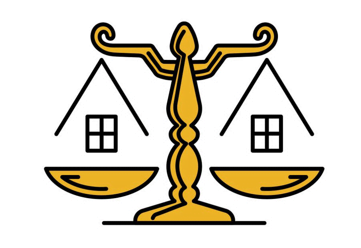OUR STORY
Quality, not quantity
We have made quality our habit. It’s not something that we just strive for – we live by this principle every day.

WHO IS LIABLE WHEN THERE ARE DEFECTS IN CONSTRUCTION
Let’s start with a couple of working definitions. Construction defect is a failure of the contractor to execute, perform in an agreed or expected way. This failure to perform can, but not necessarily, cause physical injury to the work itself and or other property or work. Construction defects include defects in design, faulty work, using of defective building products or material, and various types of soil failure and this can be characterized as a breach of a contractual obligation or a breach of a duty outside of a contract. They can be discovered as early as during construction or can go undetected for many years until symptoms appear.
Now, a construction defect claim is a claim for damages (money) arising out of a defect in construction, including design, workmanship, and materials. The defect can, but not necessarily, cause damage (or physical injury) to the work itself, to other work or property, or to both. The construction defect may cause no damage at all but still result in a claim for damages.
In either case of damage or no damage, it is common in the construction for the defect to manifest. This could be apparent and discoverable or be discovered sometime after the initial construction.
At the outset, it is important to distinguish manifestation from discovery. While discovery can be concomitant with manifestation, it doesn’t have to be. A roof leak, for example, can occur over a period of time in a second-floor closet, damaging the drywall, but not be discovered until after the damage begins.
But, in the case of latent damage, the effect may not become apparent until sometime after the work is completed, so the timing of the property damage is unclear, and the controversy begins. Furthermore, latent property damage can be characterized by a continuous and progressive process (and practically indivisible if there are multiple causes). This is the rule and not the exception in the construction defect claim world. Even experts cannot agree on when property damage exactly occurs.
EFFECTS OF CONSTRUCTION DEFECTS
It can necessitate additional costly work to repair the problem
It can cause injuries to the construction worker
It can cause injuries to future occupants of or visitors to a building, or to pedestrians passing by the site.
LEGAL CONCEPTS IN CONSTRUCTION DEFECT
CONTRACT:
The law of construction defects is largely based on contract. Before a constructions contract is entered into, the parties involved must have agreed on their personal liability should in case of any defect. So, when construction contracts are negotiated, it is important for the parties to pay close attention to the liability provisions.
INDEMNITY:
This is often done with “indemnification” provisions. If a subcontractor indemnifies a contractor for certain liability, it means that the subcontractor guarantees that if the contractor is later sued, the subcontractor will be responsible for any judgment that are rendered against the contractor. As a result, subcontractors often carry insurance policies protecting them from liability for defects. So, at the end of the day, many lawsuits resulting from construction defects are paid for by insurance companies.
THE LIABILITIES INVOLVED ARE:
Where someone falls out a window that was not properly secured to a window frame.
Where the staircase collapses because a subcontractor used sub-standard materials to build it.
An occupant receives an electric shock when turning on a light because wires were left exposed.
A ceiling must be replaced because a plumber installed a leaky pipe beneath a second floor, leading to water damage.
NB: Establishing most or all of these elements usually requires expert testimony by witnesses who are well-experienced in the kind of construction work at issue.
WHO ARE LIABLE?
The Contractor
The Subcontractor
The Building Engineer
The Landlord
COMPENSATION PAID
Damages is simply the compensation that a contracting party, or the injured person claims against the other contracting party for breaches of contract. In construction contracts, the nature of damages would ordinarily be the additional costs incurred.
NB: This article is not a legal advice, and under no circumstance should you take it as such. All information provided are for general purpose only. For information, please contact chamanlawfirm@gmail.com
WRITTEN BY CHAMAN LAW FIRM TEAM
EMAIL: chamanlawfirm@gmail.com
TEL: 08065553671, 08024230080

